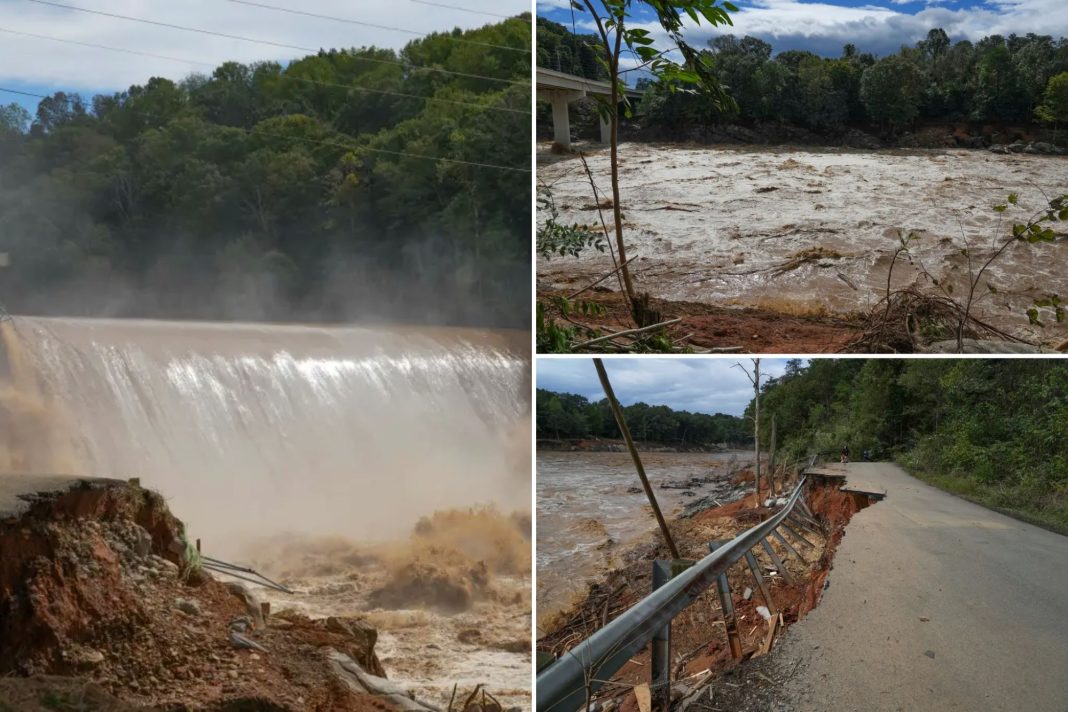As Hurricane Helene approached, authorities in Florida sounded the alarm for electric vehicle (EV) owners, urging them to take precautionary measures to safeguard their vehicles against the risks posed by saltwater flooding. The warnings were not just about the inconvenience of being stranded without a car; they highlighted the serious fire hazards associated with EVs when exposed to saltwater.
Florida Governor Ron DeSantis took to social media to emphasize the importance of parking electric vehicles in safe locations to avoid submersion. “Move your EVs to higher ground,” he advised, echoing the sentiment of safety that officials across the state were promoting. This is particularly crucial knowledge for residents in hurricane-prone regions, where flooding can quickly turn from a minor concern into a life-threatening situation.
Jimmy Patronis, Florida’s Chief Financial Officer and State Fire Marshal, shared his own alarming experiences. In a press release, he recounted witnessing fire incidents related to EVs post-Hurricane Ian, where compromised batteries led to flames flaring up even after firefighters had extinguished them. “Firefighters would put out the fire, then it would reignite,” he explained on social media. Such incidents underline the need for proactive communication from EV manufacturers regarding the risks of flooding and saltwater exposure.
The science behind these warnings is rooted in how lithium-ion batteries behave when subjected to water, especially saltwater. Tom Barth, an investigator with the National Transportation Safety Board, provided insight into the mechanics of what happens when EV batteries are submerged. He explained that saltwater can create a pathway between the positive and negative terminals of the battery, leading to short circuits. This, in turn, can trigger a phenomenon known as thermal runaway, where the battery heats up uncontrollably, potentially resulting in fire.
While manufacturers design EV batteries with insulation barriers to prevent moisture intrusion, these safeguards can fail when the battery is fully submerged. Interestingly, Barth noted that hazards can persist even after the water recedes. Salt residues left behind can conduct electricity, raising the possibility of ignition long after the immediate threat of flooding has passed. This reality underscores the importance of having EVs inspected after they’ve been exposed to flooding conditions.
The events following Hurricane Sandy in October 2021 serve as a historical benchmark for understanding the dangers posed by flooded EVs. Reports from that disaster indicated that multiple incidents of EV fires occurred after a port in Newark, New Jersey, was inundated. The National Highway Traffic Safety Administration confirmed to Patronis that these instances are not isolated, highlighting a growing concern for public safety as the frequency of extreme weather events increases due to climate change.
In a world where electric vehicles are becoming increasingly prevalent, understanding the risks associated with natural disasters is crucial. As Hurricane Helene approaches, owners of EVs, scooters with lithium-ion batteries, and even electric golf carts need to heed the warnings of officials. Keeping informed about safety measures and understanding the potential dangers of saltwater exposure can be life-saving.
In conclusion, while not every submerged EV will catch fire, the risks are significant enough to warrant attention. As storms become more frequent and severe, a proactive approach to vehicle safety in flood-prone areas is essential. This includes heeding advice from local authorities, being aware of the specific vulnerabilities of electric vehicles, and ensuring proper inspections after any flooding event. The takeaway is clear: preparation and awareness are key to mitigating risks in the face of nature’s unpredictable wrath.
